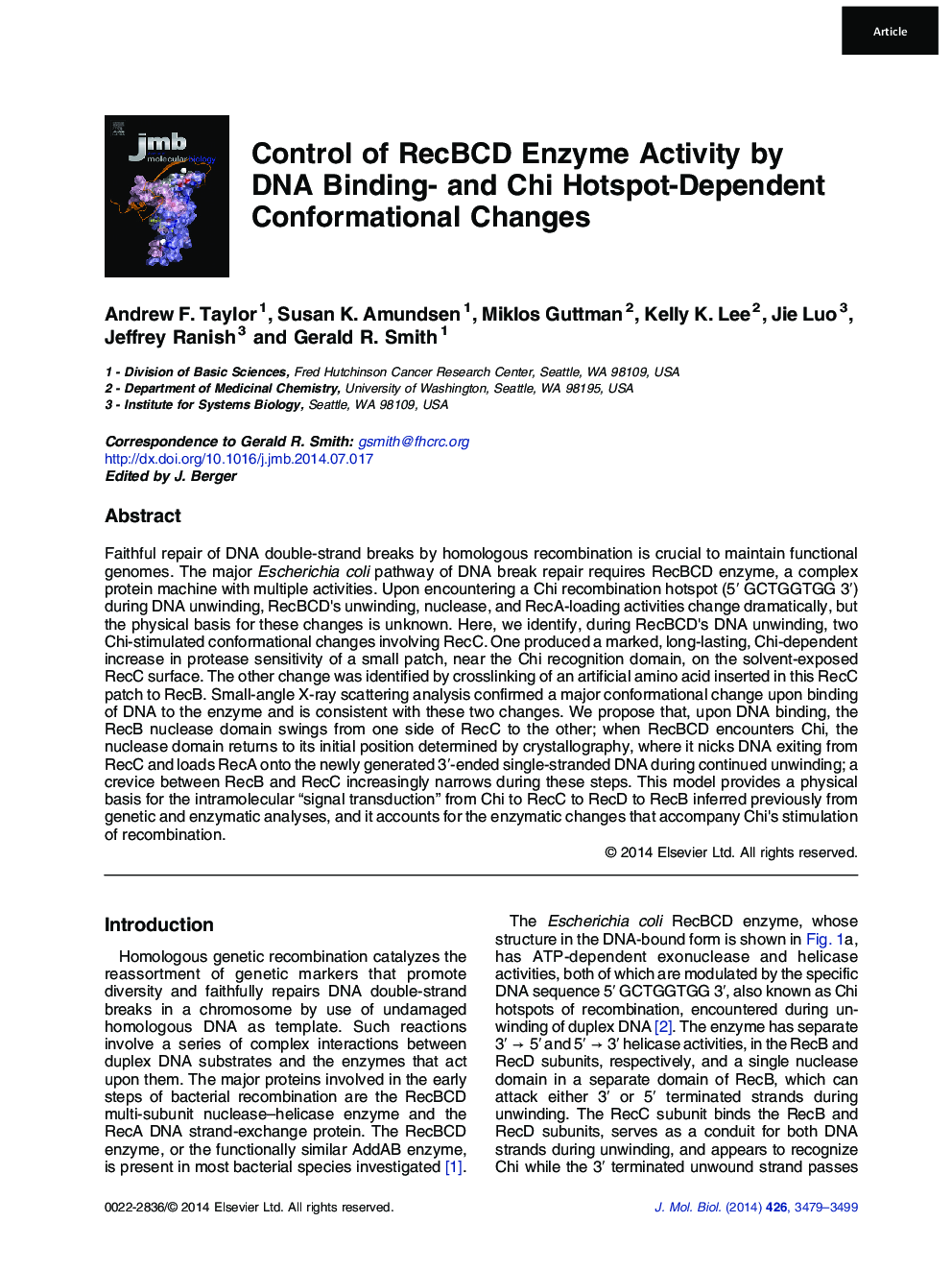| کد مقاله | کد نشریه | سال انتشار | مقاله انگلیسی | نسخه تمام متن |
|---|---|---|---|---|
| 2184420 | 1095843 | 2014 | 21 صفحه PDF | دانلود رایگان |

• RecBCD's DNA repair activities are regulated by Chi hotspots in unknown ways.
• Protease sensitivity of a surface patch of RecC changes during RecBCD reaction.
• UV-induced crosslinking and small-angle X-ray scattering reveal additional changes of RecBCD conformation.
• We propose a model of RecB's nuclease domain swinging to alternative sides of RecC.
• This model accounts for the multiple enzymatic changes of RecBCD regulated by Chi.
Faithful repair of DNA double-strand breaks by homologous recombination is crucial to maintain functional genomes. The major Escherichia coli pathway of DNA break repair requires RecBCD enzyme, a complex protein machine with multiple activities. Upon encountering a Chi recombination hotspot (5′ GCTGGTGG 3′) during DNA unwinding, RecBCD's unwinding, nuclease, and RecA-loading activities change dramatically, but the physical basis for these changes is unknown. Here, we identify, during RecBCD's DNA unwinding, two Chi-stimulated conformational changes involving RecC. One produced a marked, long-lasting, Chi-dependent increase in protease sensitivity of a small patch, near the Chi recognition domain, on the solvent-exposed RecC surface. The other change was identified by crosslinking of an artificial amino acid inserted in this RecC patch to RecB. Small-angle X-ray scattering analysis confirmed a major conformational change upon binding of DNA to the enzyme and is consistent with these two changes. We propose that, upon DNA binding, the RecB nuclease domain swings from one side of RecC to the other; when RecBCD encounters Chi, the nuclease domain returns to its initial position determined by crystallography, where it nicks DNA exiting from RecC and loads RecA onto the newly generated 3′-ended single-stranded DNA during continued unwinding; a crevice between RecB and RecC increasingly narrows during these steps. This model provides a physical basis for the intramolecular “signal transduction” from Chi to RecC to RecD to RecB inferred previously from genetic and enzymatic analyses, and it accounts for the enzymatic changes that accompany Chi's stimulation of recombination.
Graphical AbstractFigure optionsDownload high-quality image (489 K)Download as PowerPoint slide
Journal: Journal of Molecular Biology - Volume 426, Issue 21, 23 October 2014, Pages 3479–3499